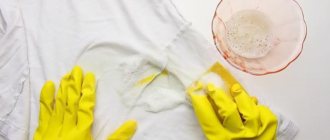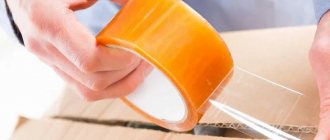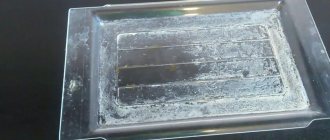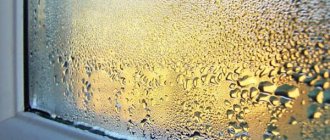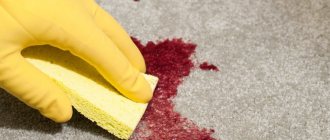When you have a beautiful wood-burning heater in the living room, the question often arises of how to clean the glass of the fireplace from soot. Without special skills and knowledge of methods, problems arise, accompanied by damage to the structure and serious financial costs. We suggest getting rid of worries and cleaning the surface the first time. Below in the article there are quite effective methods, everyone can independently choose the most convenient one for themselves.
Cleaned glass of a fireplace in the house Source custommade.com
Reasons for the appearance of soot on glass
Carbon deposits on the glass door of a fireplace stove appear due to the influence of various factors. Most often this is the choice of the wrong fuel, but what if the only resource is provided for heating, because it is also necessary to understand the reason. We suggest going through the details in this section.
For gas fireplace
When the heating source is blue fuel, the glass door becomes less clogged. If soot does appear, it’s time to think about cleaning the injectors and burners. The jets may be in the wrong position and need to be adjusted. Both factors lead to a violation of the proportion of fuel and air in the chamber. The result is contamination of the walls.
Gas fireplace with glass doors installed Source custommade.com
Reasons for Propane Furnaces
More problems arise with propane fireplaces, since the formation of soot in them is quite intense. Here we are talking similarly about clogged burners or damage to the chamber. It is possible that the fireplace is fueled with low-quality fuel. This can be assessed by the moment at which dirt began to appear on the sashes.
Problems with wood burning fireplaces
Wood fuel is considered the most natural and safest for the indoor atmosphere. This only applies if the fuel is selected correctly. It is better to order the product from one professional supplier, or even better from the fireplace manufacturer. They often provide the correct fuel. Logs that are too damp and resinous are the main sources of soot. Be sure to check that there is enough oxygen entering the firebox, as without this there will be increased smoke and dirt on the glass.
Wood-burning fireplace with slightly smoked glass Source bricookcorigliano.it
How to clean a chimney?
In order to fully clean the fireplace from the black deposits that have formed on its walls, this procedure should be started by cleaning the chimney. This procedure can be carried out in several ways:
- mechanical cleaning;
- using a special cleaner for cleaning fireplaces.
If the chimney is direct-flow, then it can be cleaned through the firebox. If the chimney has two, three or four elbows, then this procedure is best carried out from above.
So, mechanical cleaning of the chimney of a fireplace with a direct-flow outlet should be carried out according to the following instructions:
- Using a synthetic or lint brush, clean the pipe walls from the top layer of soot; to clean narrow passages, you should use a brush, but cleaning the fireplace chimney does not end there.
- In addition to soot, resins can accumulate on the chimney pipe in the form of hard lamellar deposits. You can remove them using a metal spatula.
- After the resins have been removed, you need to take a special chimney brush, which should be several centimeters in diameter larger than the pipe, and use it to remove the remaining soot, making vertical movements up and down inside the pipe.
To clean a knee chimney, you must first close all the doors in it and open the damper completely. Having climbed onto the roof and assumed a stable position, you should use large-diameter brushes and pipe cleaners to clean the pipe from carbon deposits. It is better to clean hard-to-reach areas with transitions with a brush attached to a flexible cable, with which you can change the direction of its movement and simultaneously scroll in different directions.
If a large blockage has formed inside the chimney, a brick has fallen out, or large debris has entered, then to eliminate them it is recommended to use a special core attached to a cable; apart from this, it is not recommended to use anything else. Having climbed onto the roof, you should throw the cannonball into the pipe, which, due to kinetic attraction, will break any jam.
Chemical cleaning will be effective only if there are no dense oily accumulations on the inner walls of the pipe.
To reduce creazote deposits and clean the chimney, a special “Chimney Sweeper” product has been developed, which destroys soot when burned. After this, nothing additional needs to be done, except for cleaning the grate from soot and the glass door of the fireplace from soot.
Cleaning methods: the most budget-friendly
When the question arises of how to clean soot from the glass of a fireplace, everyone tries to save money. Indeed, there are budgetary methods for this purpose; read about the details of their use below.
Ammonia
It is believed that ammonia (ammonia) is a good bleaching agent. It does a good job of removing contaminants such as soot, greasy deposits, and soot. It is considered absolutely safe for glass. To implement it, you need to follow the step-by-step instructions:
- Prepare half a liter of clean water, 1 tsp. ammonia and 1 tsp. vinegar. Mix the ingredients thoroughly and place them in a spray bottle.
- Put on rubber gloves, spread a protective agent on the floor under the fireplace: film, thick fabric, an old towel.
- Spray the mixture onto the contaminated surface and wait until the soot begins to dissipate. This process will take 2-3 minutes.
- Then gently wipe off the stain with a paper towel or soft, non-abrasive cloth. If desired, rinse the glass with water.
- Be sure to wipe the surface dry to remove streaks.
If necessary, the cleaning procedure can be repeated using this method until the soot is completely removed.
Using ammonia to clean fireplace glass Source moyaokolitsa.rf
Removing contaminants using ammonia
To clean soot on glass, a solution of: ammonia, soda, vinegar and lemon will help.
Ammonia does an excellent job of removing soot. Cleaning glass with its help occurs in several stages:
- Wait until the fireplace cools down. The door must be cold.
- Dilute ammonia with water in a container, add a little vinegar, and pour the resulting product into a spray bottle.
- Spray the liquid onto the glass and use paper towels to wipe away any cloudiness and remove soot. If the contamination is long-standing, you will have to make an effort or spray the solution on the stains and leave for 5-10 minutes. During this time, the alcohol will be absorbed into the soot, and it will be much easier to remove it.
Ammonia can not be diluted with water, but used in its pure form. But in this case, it will quickly evaporate without removing the contamination. But by soaking a napkin in ammonia, and then dipping it in ashes and wiping the glass, you can achieve success in a few minutes.
Cleaning glass: the traditional method
Video description
How to clean fireplace glass in a couple of minutes.
Ash and sponge
This method is considered mechanical, since its implementation requires some effort. But it has good efficiency, although it is considered dirty. To carry out this cleaning option, follow the instructions.
- Prepare a bucket of clean thermal water.
- Lay a protective covering on the floor to avoid staining the finish.
- Wet a sponge and apply ash from the firebox onto it.
- With this mixture, start scrubbing dirty areas on the glass.
- Repeat the procedure until soot and deposits on the surface are completely removed.
- Take a clean sponge and wash the glass until there are no streaks.
- Then wipe dry with a paper towel, removing any remaining soot.
It is not recommended to use this method when trying to clean soot in hard-to-reach places: in the corners of hinges, under the handles. When contaminants accumulate there, smudges will begin to appear from time to time, especially if condensation occurs.
Pros:
- removes dirt from the first application;
- does not require the addition of special compounds;
- budget.
Minuses:
- the need to exert strong physical pressure.
Creating a strong flame in the firebox
When using this method, you should ensure that the fuel is suitable for the procedure. That is, it was not a pollution enhancer. It is enough to light a strong flame in the firebox and let it burn for several minutes. As a result, not only does the carbon deposits on the glass door burn out, but the chimney system is also cleaned.
Using a strong flame in a fireplace insert to clean glass Source krot.info
As such, there are no instructions for using this technique; there is no need to clean the glass surface before performing it.
Pros:
- all surfaces are cleaned;
- does not require physical impact;
- safe for the door.
Minuses:
- It doesn’t always work, and sometimes it contaminates the coating even worse.
Combustion as a way to clean the glass doors of a wood-fueled fireplace Source sulaplanet.com
Scraping
Such an event is carried out with the obligatory use of a special tool - a scraper. The use of any improvised means is strictly prohibited. Instructions for this tool are included in the package. The main condition is not to overdo it with pressure, so as not to damage the glass structure.
Cleaning a fireplace with a glass door from soot Source pro-fermer.ru
It should be noted that removing soot using a scraper is possible only in extreme cases. For example, if previous methods were not successful. Scraping soot residue from the glass fireplace door may cause the tool to turn incorrectly. This will cause scratches. Such damage can lead to destruction of the surface during kindling, since any scratch causes a violation of fire resistance and the glass breaks.
Pros:
- the scraper is specially designed for this purpose;
- the method is safe for health (not accompanied by toxic odors);
- Suitable for old carbon deposits.
Minuses:
- It’s better not to take on a job without a certain skill.
Here are the most budget-friendly methods that will tell you how to clean soot from the glass of a fireplace. All options will cope with the task perfectly if the soot has accumulated in just a few kindlings. Please note that the longer dirty glass sits, the more difficult it will be to clean it by any means.
Using a fireplace scraper to clean a glass door Source hoff.ru
How to clean soot from fireplace glass video
And a small short video that gives a video answer on how to clean soot using ash from the firebox. Perhaps someone still prefers “folk” methods.
PS After watching this video once again, I finally understood why this method is called folk. It’s not at all because the peasants of some Ryazan or Tula province loved to clean the glass doors of their fireplaces on long winter evenings, and exclusively with ash. This method is simply free! And that means it’s folk.
Tags
fireplace tips
Methods using household chemicals
Budget cleaning options have run out, and if they don't help, it's time to resort to more aggressive methods. To do this, you need to use special compositions from household chemicals. Of course, you can order special preparations for caring for fireplaces. Their approximate price is 1500-2500 rubles.
But you can also save money, since general-use products are suitable for removing soot from glass. Let's look at the best options:
- Comet in spray and powder form. All you need to do is wet the glass surface with warm water, wet a clean sponge and apply the chemical to it. Then clean the glass in a circular motion and wipe dry.
- Cif cream. An ideal gentle product used for enamel coatings. It’s also great for glass, as it quickly removes soot and grease deposits on fireplace doors. The cleaning process is similar.
- Any composition for glass and mirrors. There are special sprays on sale that contain the familiar ammonia. It is enough to spray the chemical on the coating, and after a few minutes all the soot can be removed with a damp cloth.
- Dish gels: Ferry, AoS and others. To clean glass from soot stains, just take a dry, clean sponge (just be sure to come from the package, it should not contain grease from dishes). Lightly moisten it with water and then squeeze out a few drops of detergent. Next, you should make a generous amount of foam and wipe the glass sash with it. Finally, remove any residue with a dry cloth.
- "Antifat." This chemical composition is sold in the form of a spray, and when sprayed onto the surface, it generates active foam, which is the source of cleaning carbon deposits. This product for cleaning fireplace glass from soot additionally removes oils and fats that could be formed from products of improper combustion.
Pros and cons of all methods
Let us list the main disadvantages and advantages of the methods mentioned above for cleaning glass from soot and soot. Knowing the pros and cons will allow you to make optimal cleaning and use the method that suits best.
1. Ammonia
A mixture of ammonia, water and vinegar really works when it is necessary to remove dirt from the glass of heating devices. The caustic composition of ammonia can cope with even very deep stains. As mentioned above, if the stains are not removed the first time, the procedure must be repeated. Due to the low price of ammonia and the low consumption of the product, the procedure can be repeated as many times as desired without compromising the budget. One of the minuses is the very specific smell of ammonia, which, however, quickly disappears. In order not to experience discomfort from the smell, you can use special protective equipment - for example, a gauze bandage or a respirator.
2. Strong heating of the heating device
Strong exposure to high temperatures on glass can help in cleaning glass from contaminants. But if they are very deep and long-standing, this method may not work. Among the advantages of the method is its accessibility - after all, the heating of a fireplace or stove is already carried out with some frequency. The downside is that the method does not always work. At the same time, there is a high risk of getting burns when coming into contact with a hot glass surface.
3. “Newspaper and ash” method
A newspaper dipped in ashes is undoubtedly a working method, which is its main advantage. This method is also the most budget-friendly and accessible, because all you need is a regular newspaper, which can often be free, as well as ashes, which are always available in the firebox of a fireplace or stove. Among the disadvantages of this method is the need for quite strong physical impact, which causes fatigue. At the same time, the use of ash, although it will help get rid of contaminants, will cause the formation of dusty stains from the ash itself, which will also need to be disposed of.
4. Scraping method
This method undoubtedly works and helps get rid of particularly strong contaminants. The main disadvantage is the very high risk of damage to the glass surface - from scratches to cracks, if the impact is too strong. And if scratches simply reduce the quality of viewing the flame, then cracks will lead to a serious violation of the tightness of the heating device and, accordingly, to a deterioration in the heating and thermal performance of the stove or fireplace. In addition, cracks in the glass can cause smoke in the room.
5. Method of using specialized cleaning products
The use of specialized professional products for cleaning glass from soot and soot is the most optimal and recommended. The composition of such products is balanced and specially designed to interact with the glass surfaces of fireplaces and stoves. At the same time, the composition of cleaning products is almost always able to cope with even very strong and old stains. One of the disadvantages of using such products is sometimes their rather high price.
Selection of household chemicals
Before answering how to clean the glass of a fireplace, you must first decide what kind of product is needed for this purpose. For example, if you decided on household chemicals, you must understand what characteristics these products must meet:
- composition (the presence of alkali is required!);
- compatibility with the materials from which the fireplace is made;
- the recommendations from the fireplace manufacturer contain permission for use;
- there are instructions for use;
- Recommendations for compliance with precautionary measures are prescribed.
The consumer should read all this information on the packaging. The words of a sales consultant in this case will not be enough.
Kitchen cleaning gel can be used for fireplace stove glass Source skladupakovki.rf
Preparing for cleaning
Cleaning soot from a fireplace is quite a dusty job. Therefore, before starting it, it is recommended to wear household gloves to protect the skin of your hands.
Preparing to clean your fireplace
It is recommended to carry out cleaning work no earlier than 10-12 hours after the last use of the fireplace structure.
You should first cover all interior items with cellophane film to protect them from dust. You need to spread old newspapers on the floor surface.
For soot, prepare an old bucket or several garbage bags.
Once the room is completely prepared for dusty work, you can begin cleaning the fireplace from soot.
First, you should remove all the ash from the firebox of the fireplace structure using a scoop or spatula. Then you need to remove the firewood grate to clean the furthest corners of the fireplace from ash. After this, you can begin to remove the soot.
Permitted forms of purchased chemicals and tips
Since glass is considered the most fragile material, it is necessary to use safe compounds that are not abrasive. The most gentle forms are considered to be spray, gel, granules, liquid, ointment (in tubes).
When getting acquainted with such modifications of cleaning products, it is recommended to first try them on another surface that you don’t mind ruining. It is important that the processing does not lead to the formation of nicks and scratches.
Remember that the composition of the declared products must be balanced! A deficiency of one or another component or too high a concentrate can lead to damage to the glass coating.
Dishwashing detergent will help get rid of carbon deposits on the glass door Source onlinetrade.ru
Door with glass in a closed firebox: the main reasons for use
Nowadays, stoves and fireplaces with a closed combustion chamber - that is, with a glass door - are in predominant demand. The choice of this type of fireplace was dictated by several reasons:
- Increased level of fire safety compared to open fireboxes
- Higher heating characteristics of the equipment - heat does not go “waste” through an open firebox and warms the room more efficiently
- The opportunity to admire live fire safely
- Protecting children and pets from exposure to open flames
- Clean space next to the fireplace
- Possibility to turn a closed fireplace into an open one and vice versa at any time by opening or closing the door
The reasons listed are quite significant - fire safety and heating efficiency are really of great importance to users. But such advantages also have their price - since the glass of the door is a natural barrier between the fire and the room, it takes on not only temperature loads, but also various contaminants formed during the combustion process. Eliminating such formations is not difficult, you just need to do it wisely and with some knowledge, which will help avoid damage to the glass and will not spoil the panorama of the flame in the future.
How to minimize the appearance of soot
To slightly reduce the level of soot on the doors, and not have to wonder how to clean the glass of the fireplace, you can try to reduce the amount of dirt formed. To do this, you need to follow a few tips.
- Use only high-quality fuel. Be sure to eliminate the presence of moisture in the firewood. Use deciduous species, since coniferous trees contain a lot of resin, which accumulates on the glass and burns. Such contamination is then very difficult to wash off.
- Wipe down the fireplace door after each fire. This way you will remove a minimal amount of soot every time and deal with the problem in 1-2 minutes. If carbon deposits accumulate, more time and effort will have to be spent.
- When purchasing a fireplace, pay attention to the presence of such an additional function as a self-cleaning door. With this innovation, you will be able to avoid dirty work altogether.
- When starting the slow combustion system, try not to completely shut off the air supply to the firebox. Otherwise, the fuel will begin to smoke rather than burn. With a decrease in heat transfer, much more carbon deposits appear.
Regular maintenance of the fireplace will make it possible to avoid rough cleaning of its surfaces.
Fireplace care option - choosing the right fuel Source gazovshik.pro
Removing dirt using folk remedies
The most unpleasant consequence of fuel combustion is a dense layer on the glass, representing fumes and soot. Due to the fact that the basis of this plaque is creosote, which attracts soot particles like a magnet, simple treatment with a damp cloth will not help here. We have to resort to accumulated experience, because we have always encountered similar problems.
- If the glass has become smoked recently, and the soot layer has not had time to dry in the creosote, then it is quite possible to use self-cleaning, which consists of burning dry hardwood firewood with plenty of air access. To do this, you need to open the blower door all the way. At high temperatures, soot particles burn out and the glass is freed from carbon deposits. But this method is good only if you promptly discover that the glass needs to be cleaned.
- Mix equal parts of water and vinegar. The resulting solution is poured into a spray bottle. The fireplace door will have to be removed and placed on a horizontal surface. A layer of newspaper is applied to the smoked areas. These newspapers are soaked in the vinegar solution and left for some time. Then the glass should be treated with wet newspapers as a cloth.
Be sure to use rubber gloves while working
Sometimes ash taken from the ash pit is used to clean glass. It is known that it forms an acidic environment. Under the influence of chemical reactions, carbon deposits are broken down and the surface can be washed. For ease of work, use a sponge. The ash should not contain dirt, otherwise the glass may be scratched. Ash is poured onto a moistened sponge and the surface is treated with gentle movements. If necessary, wash the sponge well and add a new portion of ash again. Another recipe for preparing a fireplace glass door soot cleaner is based on mixing ammonia, vinegar, lemon and soda. The soot layer must first be moistened, after which we can easily clean the soot
It is important to remember that an increased concentration of ammonia will make it possible to make a more active solution, and cleaning the glass will be simplified, but the ammonia will quickly evaporate, and this fact will have to be taken into account.
Useful tips
You can’t do without useful tips in the fireplace business. They will help correct the situation and further prevent the appearance of soot and other waste in the chamber of the heating device. Please note the following points:
- After cleaning the door, wet the sponge with a concentrated soap solution (meaning one that is made not of liquid, but of solid wood). Wipe the glass surface. There will be no immediate effect and after drying, streaks will be visible. But after heating the glass during kindling, it will remain transparent.
- Application of liquid for automotive chrome. If the household has products for cleaning and removing stains from chrome car parts, then you can apply this to the inner surface of the glass after cleaning, and then wipe it dry. The coating will always be clean during lighting.
- "Clean glass" effect. This is a kind of barrier that will prevent the appearance of soot on the inner surface of the door. It is enough to leave a small gap in the upper part above the sash. Air will additionally penetrate through it into the firebox and prevent soot from settling on the coating. But, this procedure must be carried out with each kindling.
If you follow preventive measures, you won’t even have to buy a fireplace glass cleaner.
Regular cleaning of the fireplace insert Source atlantmasters.ru
spring-cleaning
The main part of cleaning, the most labor-intensive, consists of washing soot from the ceiling and walls. Here you will have to use a large amount of warm water with a rag. You will have to constantly change rags and water as they become dirty. The work must be done slowly and thoroughly, so that after washing the wall looks clean and free of soot. You can't do this with water alone: you'll need special detergents.
DIY cleaning liquids
Folk remedies are used to clean smoked walls. They can be found at any housewife. But they are used according to the rules in order to get a positive result from cleaning.
Soda ash solution
Soda ash is poured into hot water. For 0.5 liters, 2 tablespoons of the product are enough. Wet a rag or brush and rub it along the walls with sweeping movements. You cannot rub soot into surfaces, otherwise it will be difficult to wipe it off later.
Dish detergent solution
Soap solutions are prepared from warm water with the addition of dishwashing liquid. In 5-7 liters you need to dissolve 1 tablespoon of concentrate. First, wash the ceilings, then the walls and floors with rags. But at the end you should dip the brushes in the solution and rinse them clean.
Toilet bowl cleaner solution
It is necessary to choose alkaline compounds, since soot in the room becomes greasy to the touch and is difficult to deal with. If you use Domestos, it will not only clean contaminated surfaces, but also disinfect them and eliminate unpleasant odors.
How to care for glassware
Glassware requires special care. Only in this case will she always look neat. The first rule of care is proper processing. It should be washed with a soft sponge and liquid products. Any abrasive substance or hard sponge will damage the surface. It is also recommended to remove jewelry from your fingers before processing.
After each wash, wipe the product with a soft cloth or place it upside down on a towel. Otherwise, stains will appear, which will be difficult to get rid of in the future. If the mold is not used for cooking for a long time, then it still needs to be washed once every 2-3 months to remove dust accumulated on the surface.
How to clean oven glassware from heavy carbon deposits
Dishes that are prepared in the oven are healthy, safe for health, incredibly aromatic and tasty. They can be prepared only in specialized containers that can withstand high temperatures of up to 200-250 degrees. But, when cooking, soot and soot appears on it. To quickly get rid of these defects and give the glass its previous appearance, you need to do a number of actions:
- Pour hot water into the container, preferably boiled.
- Dilute a small amount of dishwashing detergent. If there are no suitable household chemicals with a gentle composition, then shavings of laundry soap can be an alternative.
- Pour the soap solution into the dishes that need to be cleaned of carbon deposits.
- Close the door, turn on the equipment, selecting a temperature mode of 120 degrees.
- After 30 minutes, remove the baking container and wait for the soap solution to cool to room temperature.
- Rinse it with water and wipe with a soft, dry cloth. Use a damp cloth to wipe the walls of the oven.
If the treatment is carried out correctly, then soot, dirt, grease and soot should disappear from the dishes. If necessary, you can repeat it to achieve greater effect. After completing the procedure, it is recommended to leave the oven door open for several hours to remove the smell of soap or cleaning product.
Attention! It is strongly recommended not to soak glass containers in hot water or boiling water. It is necessary to ensure that the liquid is at a temperature at which you can hold your hands for several seconds without burning your hands. It is also strictly forbidden to dilute hot water with cold water, as this may cause the glass to burst or crack. The liquid should cool naturally.
Other methods
You can clean glass without using additional products. Simply turn the fire on high so that the hot flames burn away the soot that has formed. This method helps not only to remove dirt, but also to keep the chimney clean. Moisten a newspaper with water and dip it into the ashes at the bottom of the stove. Apply to dirt and rub until soot and deposits are removed. Then wipe with a dry cloth or napkin. Cleaning will take a long time and hard, but the result will certainly please you. If no product helps fight stains, use a blade or tool with a sharp tip and scrape off the stains until they disappear completely.
Please note that there is a risk of damaging or scratching the glass.

